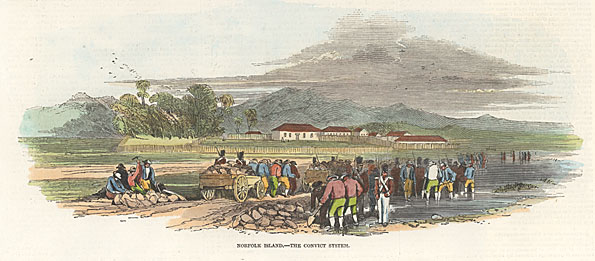 Convicts at work, Norfolk Island, 1840s
Convicts at work, Norfolk Island, 1840s
TLF ID R3177
This is a hand-coloured wood engraving, measuring 10.3 cm x 24 cm, used to illustrate a newspaper article published on 12 June 1847. It shows a group of convicts undertaking hard physical work, making a bridge over a shallow stream. Uniformed and armed guards are evident, although the convicts appear to be working under their own guidance. Crossing the bridge are two loaded carts being pulled by teams of eight convicts in place of horses. The engraving is titled: 'NORFOLK ISLAND - THE CONVICT SYSTEM'.
